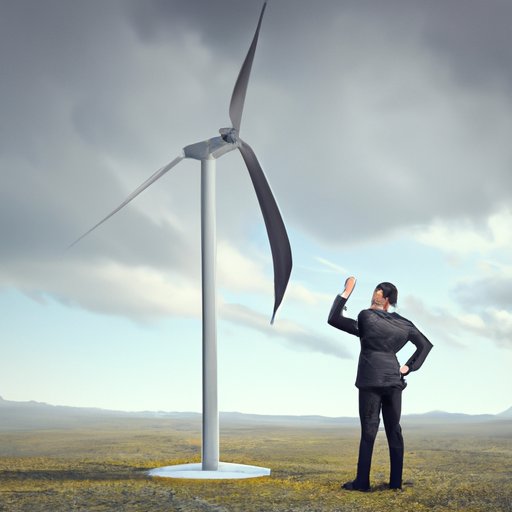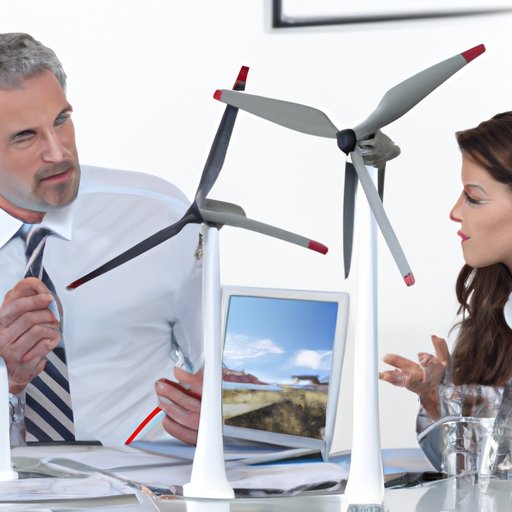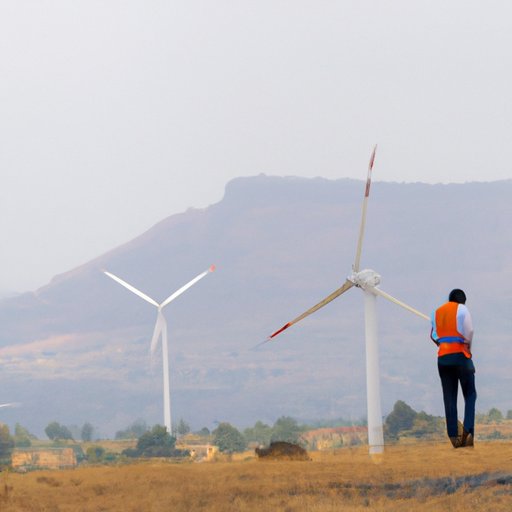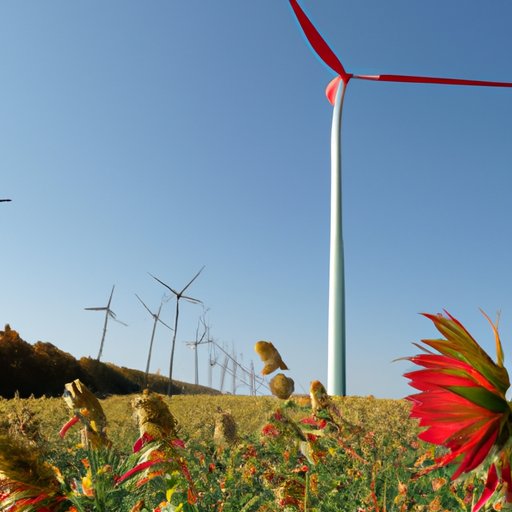Introduction
Wind energy is a renewable form of energy that has been used for centuries to power ships, grind grains, and generate electricity. In recent years, technological advances have allowed for significant improvements in the efficiency and output of wind turbines, as well as reductions in their operating costs. This article will explore some of the recent advances in wind energy technology and discuss their implications on the environment, society, and economy.
Analyzing the Impact of Recent Advances in Wind Energy Technology
One of the most notable advancements in wind energy technology is improved efficiency and output. Through the use of more advanced blades and rotors, as well as improved design techniques, modern turbines are able to capture more of the wind’s energy and convert it into usable electricity. This has led to an increase in the amount of energy that can be produced from a single turbine, resulting in greater overall efficiency.
Another benefit of recent advances in wind energy technology is the reduction in operating costs. With improved designs and better materials, the cost of manufacturing, installing, and maintaining turbines has decreased significantly. This has made wind energy more cost-effective compared to other forms of energy, such as fossil fuels.
Finally, recent advances have also increased the reliability of wind turbines. Automated maintenance systems are now able to detect faults or problems before they become serious, allowing for quick repairs and ensuring that turbines remain operational. Additionally, real-time monitoring systems can provide useful data which can be used to optimize turbine performance.
What are the Implications of New Wind Energy Technologies?
The implementation of new wind energy technologies has several important implications, both positive and negative. On the positive side, the increased efficiency and reduced costs associated with wind energy can have a significant impact on the environment. By reducing the burning of fossil fuels, wind energy can help to reduce greenhouse gas emissions and slow the rate of global warming.
On the other hand, there are also some potential societal implications of wind energy technology. The installation of large-scale turbines can affect local wildlife habitats, leading to displacement or even extinction of certain species. Additionally, the noise generated by turbines can be disruptive to nearby communities, leading to complaints and resistance from local residents.

Exploring the Benefits of Innovative Wind Energy Solutions
Despite the potential drawbacks, there are many benefits to using wind energy technology. One of the most obvious is cost savings. As mentioned earlier, the cost of manufacturing, installing, and maintaining turbines has decreased significantly due to advances in technology. This makes wind energy an attractive option for businesses and individuals looking to save money on their energy bills.
Wind energy is also a renewable source of energy, meaning that it can be used indefinitely without having to worry about running out of fuel or resources. This is especially beneficial for developing countries that lack access to traditional sources of energy, such as oil and coal.
Finally, the use of wind energy technology can also lead to increased self-sufficiency. By generating their own energy, businesses and individuals can reduce their dependence on external sources, leading to greater autonomy and independence.

Examining the Latest Developments in Wind Turbine Design
In order to take full advantage of the benefits of wind energy technology, engineers and designers have had to make numerous improvements to the design of wind turbines. Advanced blades and rotors are now able to capture more of the wind’s energy, resulting in increased efficiency and output. Additionally, automated maintenance systems are able to detect faults or problems before they become serious, leading to fewer delays and fewer costly repairs.
Real-time monitoring systems are also being used to measure and analyze the performance of individual turbines. This data can then be used to optimize the operation of the turbine, leading to further increases in efficiency and output.
Investigating the Cost-Benefit Analysis of Wind Energy
When considering the use of wind energy, it is important to understand the cost-benefit analysis. Factors such as the initial investment, ongoing maintenance costs, and expected return on investment should all be taken into account. Additionally, the cost of wind energy should be compared to the cost of other sources of energy, such as fossil fuels.
It is also important to consider the potential long-term benefits of wind energy. For example, the use of wind energy could lead to reduced greenhouse gas emissions and slower rates of global warming. This could result in a number of positive outcomes, such as improved air quality, increased crop yields, and reduced health risks.

Evaluating the Potential for Wind Power in Developing Countries
In addition to the cost-benefit analysis, it is also important to consider the availability of resources, local infrastructure, and government support when evaluating the potential for wind power in developing countries. In areas where the necessary resources and infrastructure are available, wind energy can be an attractive option for providing reliable and affordable energy. However, in areas where these conditions are not met, the implementation of wind energy may be difficult or impossible.
Comparing and Contrasting Traditional and Modern Wind Energy Technologies
In order to fully understand the implications of recent advances in wind energy technology, it is important to compare and contrast traditional and modern technologies. While traditional wind turbines relied on simple designs and materials, modern turbines are much more sophisticated. Advanced blades and rotors are able to capture more of the wind’s energy, while automated maintenance systems and real-time monitoring systems ensure that turbines remain operational and efficient.
However, despite the advantages of modern wind energy technology, there are still some challenges to its implementation. For example, the installation of large-scale turbines can be expensive and disruptive to local wildlife habitats. Additionally, the noise generated by turbines can be disruptive to nearby communities, leading to complaints and resistance from local residents.
Conclusion
In conclusion, recent advances in wind energy technology have resulted in improved efficiency, reduced costs, and increased reliability. These advancements have had a number of important implications for the environment, society, and economy. By reducing the burning of fossil fuels, wind energy can help to reduce greenhouse gas emissions and slow the rate of global warming. Additionally, the use of wind energy can lead to cost savings, greater self-sufficiency, and improved air quality. Finally, modern wind energy technologies offer numerous benefits over traditional methods, including advanced blades and rotors, automated maintenance systems, and real-time monitoring.
(Note: Is this article not meeting your expectations? Do you have knowledge or insights to share? Unlock new opportunities and expand your reach by joining our authors team. Click Registration to join us and share your expertise with our readers.)
